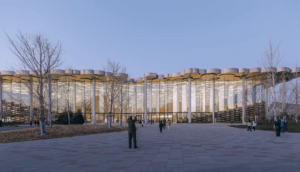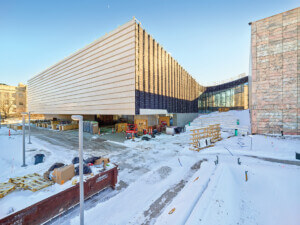A green building research center at Harvard has enlisted Snøhetta to transform its headquarters into a test site for technology that may make it easier to retrofit older homes.
Using its modest headquarters as a guinea pig, the Harvard Center for Green Buildings and Cities (CGBC) at the GSD will retrofit its on-campus home. Designed by Snøhetta, the HouseZero project revamps the CGBC’s 1924 stick-built house to run without an HVAC system, without daytime electric lighting, and produce zero carbon emissions, among other efficiencies.
The project is the brainchild of Ali Malkawi, professor of architectural technology at the GSD and the center’s founding director.
“Before now, this level of efficiency could only be achieved in new construction,” said Malkawi, in a press release. “We want to demonstrate what’s possible, show how this can be replicated almost anywhere, and solve one of the world’s biggest energy problems—inefficient existing buildings.”
In the United States, 113.6 million homes use around ten percent of the nation’s energy. Although there are plenty of new buildings that are net-zero, there aren’t many practitioners working to bring older buildings—especially older houses—up to that standard.
For the CGBC, which was founded in 2014 to promote high-performance building techniques through design, HouseZero is a major test project. Instead of considering the house as a sealed box, Snøhetta will create an envelope that passively heats and cools itself. The HVAC system will be replaced with thermal mass, while a ground source heat pump will provide extra energy to regulate temperatures in the warmest and coldest months. Clad in white cedar shingles, HouseZero sports ash and birch interior finishes, natural clay plaster, and reclaimed brick and granite—all high-performing, locally available materials.
The building components are outfitted with sensors so the structure can adjust itself for thermal comfort throughout the day while collecting data for future retrofits. A lab inside will be connected to the energy exchange system so architects and researchers can swap and test new facades and materials to further optimize the structure’s performance.
The project’s concept design was developed in collaboration with the Center and with Snøhetta, which will act as lead architect, interior, and landscape architect. (The U.S. branch of Norwegian construction company Skanska is working on the house, as well.)
Though it could probably go LEED super-platinum, HouseZero’s creators aren’t setting out to build for any existing certifications. According the press release, the team “wants to demonstrate an entirely new paradigm for ultra-efficiency, one that is localized and focused on curbing energy demand, with energy production secondary to that.”
Construction is expected to take between seven and nine months.










